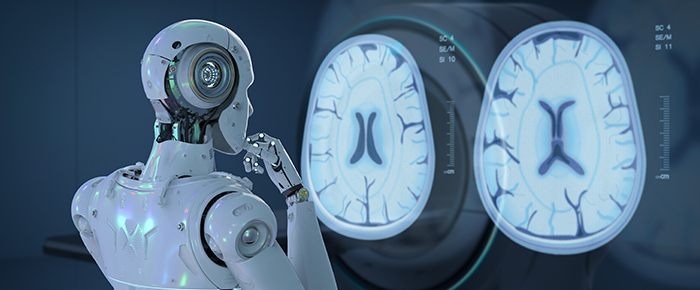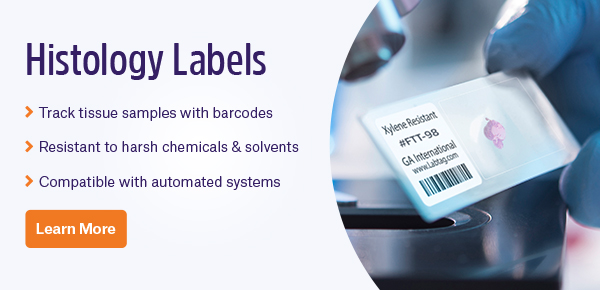
Artificial Intelligence (AI), image recognition AI in particular, has the potential to revolutionize medical diagnostics. By 2023, the AI medical imaging market is projected to be worth approximately $2 billion. Currently, about 17% of providers are using AI technology, with that number estimated to rise to 30%. In addition to enabling early disease detection, AI in medicine can enhance diagnostic processes and improve the workflow of radiologists by accelerating reading time and automatically prioritizing urgent cases.
New technology & data processing tools
AI in medicine is already being used for image recognition by radiologists to help detect signs of pathology. However, while they have a range of imaging methods at their disposal, they often need to use them in combination to accurately diagnose a patient. A perfect example is the need to follow up a chest X-ray scan with a CT scan to further investigate a suspicious lesion. This remains a substantial hurdle for AI-driven image analysis software that can only process one or the other. As such, AI software must be able to combine and interpret data from different sources. Still, recognizing signs of disease in images from multiple imaging techniques requires an extremely high level of training, above what is already required for a diagnostics single modality image recognition AI. The sheer quantity of data sets, time, and manpower required to achieve this means that, from a business perspective, it is not yet feasible for AI companies to implement.
AI software should also have the ability to recognize multiple diseases. Currently, AI-driven analyses are typically focused on diagnosing a restricted range of pathologies. By restricting the number of diseases the AI has encountered, you also limit its potential use, as the AI can miss signs of a disease it has not been trained for. This can lead to misdiagnosis and a growing mistrust of the technology by the public, hampering its implementation. Therefore, the software should be trained for a broader range of diseases and encompass numerous types of abnormalities associated with each disease. This increases the number of pathologies the software can help diagnose and ensures it can identify them in a multitude of demographics and tissue types, achieving the level of sensitivity and specificity required by pathologists and radiologists.
In addition, the software should be compatible with existing equipment and integrate seamlessly into current workflows. One way to achieve this is by integrating image recognition AI directly into imaging equipment. This would facilitate the automation of medical image analysis while avoiding the issue of connectivity. The downside to this would be that hospitals would not be able to choose their software provider, as it would be tied to their equipment. As such, the value and adoption of such a method would rely on the performance level and capabilities of the integrated AI software.
Applications in disease
Examples of successful applications of AI or promising approaches range from using AI software to pre-process medical images to applying deep learning algorithms for pathologic subtype classification.
Cancer
A recently published study showed that AI technologies could perform at levels equal to radiologists in evaluating digital mammographies1. In addition to its potential in cancer evaluation, AI can further automate the initial image interpretation process and help select an optimal therapeutic intervention. AI can also be used to assess prognosis and predict clinical outcome post treatment.
Cardiovascular Disease
Chest X-rays are typically the first imaging test prescribed when a patient complains of shortness of breath or displays other heart disease-related symptoms. A diagnosis is then made by analyzing the various structures of the heart and blood vessels. Automation with AI can accelerate this process and help reveal heart abnormalities in these chest X-rays. These systems could be taught to accurately assess cardiomegaly (heart enlargement), allowing radiologists to exclude pulmonary and cardiac problems, and reducing the risk of an inaccurate diagnosis. AI may even have a future role in analyzing electrocardiogram (EKG) results, providing diagnoses of arrhythmias and other electrical heart disorders much faster.
Dementia
Alzheimer’s is the most common form of dementia and is most prevalent in patients over the age of 65. Researchers have used 18-F-fluorodeoxyglucose positron emission tomography (FDG-PET) technology and deep learning algorithms to predict the early onset of Alzheimer’s in patients2. This technique uses a radioactive compound injected into the bloodstream and taken up by brain cells as a gauge of metabolic activity, as has shown to predict the development of Alzheimer’s even years before a conventional diagnosis is possible. Early detection has the potential to slow or even halt the progress of the disease in these patients.
Disrupting medical diagnostics in the future
The introduction of next-gen sequencing technologies has led to sustained gains in throughput, which has enhanced the value of using molecular genetics in medical diagnostics. Coupled with the increased identification of both diagnostic and prognostic markers of pathology, this has the potential to significantly improve targeted therapy options and to pave the way for personalized medicine to become the norm, rather than the exception3. In addition, the data collection process continues to transition to a more digital format, which affords the ability to integrate automation for the collection and analysis of results, which a wide range of stakeholders can easily access. This offers the opportunity to better share information across institutions and facilities, allowing patients to be enrolled in more clinical trials with more targeted treatments.
AI in medicine, together with deep learning and machine learning techniques, can revolutionize diagnostics using this digital data. AI is on the cusp of being introduced into routine medical diagnostic procedures, enhancing diagnostic methods by facilitating the classification of disease subtypes, thus guiding better personalized treatment options. One exciting possible use of AI in the future is to run simulations, forecast cancer trajectories, and predict the potential impact of different therapeutic strategies3. These simulations can help guide the course of treatment that looks most promising for each individual patient, hopefully minimizing side effects and potential complications.
LabTAG by GA International is a leading manufacturer of high-performance specialty labels and a supplier of identification solutions used in research and medical labs as well as healthcare institutions.
References:
- Rodriguez-Ruiz A, Lang K, Gubern-Merida A, et al.Stand-Alone Artificial Intelligence for Breast Cancer Detection in Mammography: Comparison With 101 Radiologists. JNCI J Natl Cancer Inst. 2019;111(9).
- Ding Y, Sohn JH, Kawczynski MG, et al. A Deep Learning Model to Predict a Diagnosis of Alzheimer Disease by Using 18F-FDG PET of the Brain. Radiology. 2019;290(2):456-464.
- Walter W, Haferlach C, Nadarajah N, et al.How artificial intelligence might disrupt diagnostics in hematology in the near future. Oncogene. 2021;40:4271–4280.



